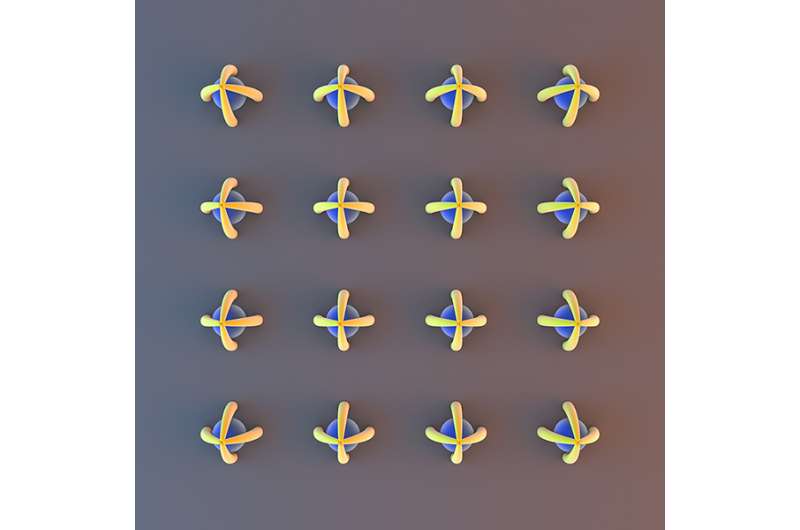Laser technique for low-cost self-assembly of nanostructures

Researchers from Swinburne University of Technology and the University of Science and Technology of China have developed a low-cost technique that holds promise for a range of scientific and technological applications.
They have combined laser printing and capillary force to build complex, self-assembling microstructures using a technique called laser printing capillary-assisted self-assembly (LPCS).
This type of self-assembly is seen in nature, such as in gecko feet and the salvinia leaf, and scientists have been trying to mimic these multi-functional structures for decades.
The researchers have found they can control capillary force – the tendency of a liquid to rise in narrow tubes or be drawn into small openings – by changing the surface structure of a material.
"Using laser printing techniques we can control the size, geometry, elasticity and distance between tiny pillars – narrower than the width of a human hair – to get the self-assembly that we want," Swinburne's Dr Yanlei Hu, said. He is the lead author of a study published in the prestigious Proceedings of the National Academy of Science.
Ultrafast laser printing produces an array of vertical nanorods of varying heights. After the laser process, the material is washed in a development solvent using a method similar to traditional darkroom film processing. The gravity-governed capillary force difference creates pillars of unequal physical properties along different axes.
"A possible application of these structures is in on-chip micro-object trap-release systems which are in demand in chemical analysis and biomedical devices," co-author Dr Ben Cumming said.
The researchers demonstrated the ability of the LPCS structures to selectively capture and release micro-particles.
"This hybrid strategy for preparing hierarchical structures features simplicity, scalability and high flexibility in comparison to other state-of the-art approaches such as photolithography, electron-beam lithography and template replicating," Director of the Centre for Micro-Photonics at Swinburne, Professor Min Gu, said.
"Moreover, the assembled cells can be used as automatic micro-grippers for selective trapping and controllable releasing, suggesting many potential applications in the field of chemistry, biomedicine and micro-fluidic engineering."
The paper "Laser printing hierarchical structure with the aid of controlled capillary-driven self-assembly" has been published in the Proceedings of the National Academy of Science.
More information: "Laser printing hierarchical structures with the aid of controlled capillary-driven self-assembly." PNAS 2015 ; published ahead of print May 18, 2015, DOI: 10.1073/pnas.1503861112
Journal information: Proceedings of the National Academy of Sciences
Provided by Swinburne University of Technology




















